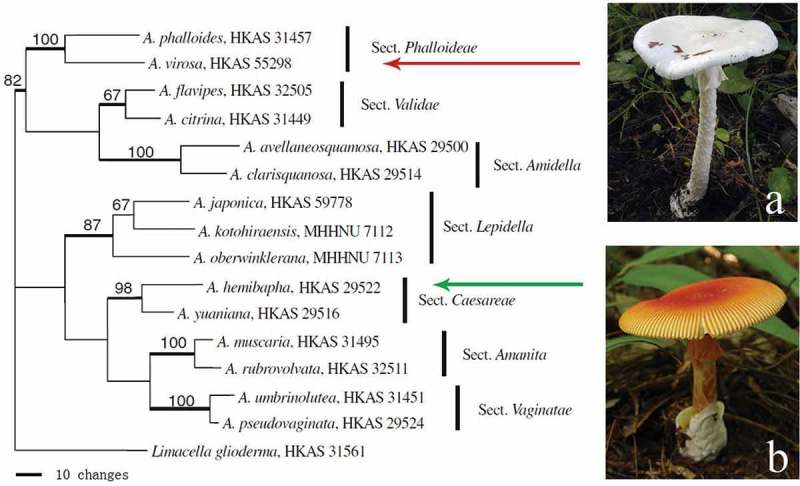In this blog post, we embark on a fascinating journey into the world of the Amanita genus. I try to as simple as I can with the information below. With an estimated 900-1000 species worldwide, these mushrooms hold a wealth of diversity and ecological significance. Join us as we explore their origins, dispersal patterns, and the intriguing prospect of cultivating Amanita Muscaria, commonly known as the fly agaric. From their complex life cycles to their symbiotic relationships with host trees, this post sheds light on the remarkable nature of these enigmatic fungi.
Amanita Genus
The Amanita genus comprises an estimated 900–1000 species worldwide, with approximately half of them formally described. Of these, about 100 are known to be toxic, while roughly 50 are edible, leaving the edibility of the remainder largely unknown. Over the past two decades, approximately 220 new Amanita taxa, including new species, varieties, and forms, have been documented globally, particularly in regions like East Asia, Central and South America, South Africa, and Australia. A. muscaria, the type species of genus Amanita, is found in Europe, North America and temperate eastern Asia. Scientist agree, that A. muscaria likely originated from the Siberian-Beringian region.
Dispersal of Amanita Genus
The origin and dispersion of the Amanita genus remain uncertain due to the absence of fossil records. Current evidence suggests their presence before the breakup of Gondwana, indicating potential isolation through continental drift. Studies propose that some lethal and edible Amanita species likely originated in the palaeotropical zone, with subsequent migration patterns indicating dispersion from Eurasia to North and Central America. While oceans act as barriers, factors like deserts and mountains may also contribute to vicariance. The dispersal of Amanita species is closely linked to their host plants. Many amanitas from the south or east of this region are symbionts of leguminous or polygonaceous plants and basidiospores likely play important roles in the dispersal of Amanita species.
Where do Amanita Muscaria grow?
Amanita Muscaria, commonly known as the fly agaric, is found in Lithuania, particularly in coniferous and mixed forests. Fruiting bodies of Amanita Muscaria are commonly seen throughout continental Europe and the UK from July to October. It forms a mycorrhizal relationship with certain tree species, which means it establishes a mutually beneficial association with the roots of these trees. In Lithuania, we most likely encounter Amanita muscaria in areas with spruce (Picea), pine (Pinus), and birch (Betula) trees. These mushrooms are known for their distinctive red caps with white spots, making them easily recognizable. However, please exercise caution if you intend to forage for wild mushrooms, as not all species are edible, and some can be toxic. If you’re unsure about the identification of a mushroom, it’s best to seek advice from an experienced mycologist or expert.
Can I cultivate Amanita Muscaria?
Cultivating Amanita Muscaria (fly agaric) can be challenging and is not commonly done for several reasons. Firstly, it has a complex life cycle that involves a mycorrhizal association with specific tree species, forming a mutually beneficial relationship with the roots of certain trees, which can be difficult to replicate in a controlled cultivation setting. Additionally, Amanita Muscaria typically associates with specific types of trees like spruces, pines, and birches, making it challenging to provide the precise environmental conditions and host trees necessary for successful cultivation. Moreover, in nature, Amanita Muscaria supplies nutrients to its host trees in exchange for sugars produced through photosynthesis, making it intricate to replicate this symbiotic relationship in a controlled environment. Attempting to cultivate Amanita Muscaria is generally not recommended, and it’s best to appreciate it in its natural habitat.
Conclusion
As we conclude our exploration of the Amanita genus, we’ve uncovered a world of diversity and mystery. With hundreds of species, intricate life cycles, and fascinating dispersal patterns, these mushrooms continue to captivate the imagination of scientists and enthusiasts alike. While cultivating Amanita Muscaria presents significant challenges, the allure of these remarkable fungi remains strong. Whether you’re an aspiring mycologist or simply curious about the natural world, the Amanita genus reminds us of the boundless wonders awaiting discovery in the realm of mushrooms.
References
1. Geml, J.; Laursen, G. A.; O’neill, K.; Nusbaum, H. C.; Taylor, D. L. (2006): Beringian origins and cryptic speciation events in the fly agaric (Amanita muscaria). In Molecular ecology 15 (1), pp. 225–239. DOI: 10.1111/j.1365-294X.2005.02799.x  .
.
2. Malgorzata Drewnowska; Krzysztof Lipka; G. Jarzynśka; D. Danisiewicz-Czuprynśka; Jerzy Falandysz (2013): Investigation on metallic elements in fungus Amanita muscaria (Fly Agaric) and the forest soils from the Mazurian Lakes District of Poland. In Fresenius environmental bulletin 22 (2), pp. 455–460. Available online.
3. Rampolli, Francesca Irene; Kamler, Premila; Carnevale Carlino, Claudio; Bedussi, Francesca (2021): The Deceptive Mushroom: Accidental Amanita muscaria Poisoning. In European journal of case reports in internal medicine 8 (3), p. 2212. DOI: 10.12890/2021_002212  .
.
4. Zhang, Ping; Tang, Li-Ping; Cai, Qing; Xu, Jian-Ping (2015): A review on the diversity, phylogeography and population genetics of Amanita mushrooms. In Mycology 6 (2), pp. 86–93. DOI: 10.1080/21501203.2015.1042536  .
.





